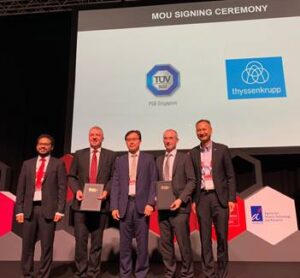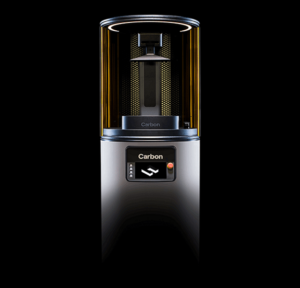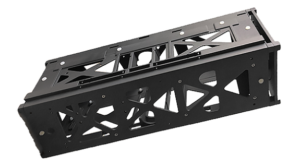We’ve got a lot of business news for you, plus a case study, in today’s 3D Printing News Briefs. TÜV SÜD and thyssenkrupp have signed an MoU, while Dassault Systèmes has a few announcements, including a new collaboration. Agile Manufacturing is expanding its facility to make room for the new technology it’s adopting from Carbon. Finally, CRP Technology has published a case study on its SLS 3D printed CubeSat structure.
TÜV SÜD Signs MoU with thyssenkrupp Innovations in Singapore

From left: Abhinav Singhal, Chief Strategy Officer APAC, thyssenkrupp; Jan Lüder, CEO of thyssenkrupp Industrial Solutions (Asia Pacific) Pte. Ltd.; Dr. Ho Chaw Sing, Managing Director, NAMIC; Holger Lindner, CEO of Product Service Division, TÜV SÜD; Richard Hong, CEO of TÜV SÜD ASEAN
Global enterprise TÜV SÜD, the Singaporean arm of the German safety and quality expert, announced that it has signed a Memorandum of Understanding (MoU) with additive manufacturing solutions provider thyssenkrupp Innovations. Under this new partnership, the two will work together to develop the market for AM-enabled solutions in the Asia Pacific (APAC) region over the next three years. The first order of business will be setting up industrial-grade manufacturing solutions, followed by testing, inspection, and certification for mobility and land transportation and industrial plant services, and the companies are currently testing and commercializing a train part for one of the region’s top train operators.
“The field of additive manufacturing (AM) is an integral pillar of Industry 4.0. AM presents new opportunities for serial production and supply chains but early adopters will need to navigate through uncertainties in this fast- evolving technology,” said Holger Lindner, the CEO of TÜV SÜD’s Product Service Division. “Through this collaboration with thyssenkrupp, we aim to inspire trust among the frontrunners and demonstrate Singapore’s readiness for industrial grade additive manufacturing.”
Multiple Dassault Systèmes Announcements
 Dassault Systèmes is making several announcements, starting with news of a multi-year collaboration with Lockheed Martin, which is supporting its digital engineering initiatives with the 3DEXPERIENCE platform as it designs the next generation of helicopters and airplanes. The company’s Aeronautics and Rotary and Mission Systems business areas are specifically using 3DEXPERIENCE for its 3D design software, 3D Digital Mock Up, and PLM solutions in order to increase agility, collaboration, and speed.
Dassault Systèmes is making several announcements, starting with news of a multi-year collaboration with Lockheed Martin, which is supporting its digital engineering initiatives with the 3DEXPERIENCE platform as it designs the next generation of helicopters and airplanes. The company’s Aeronautics and Rotary and Mission Systems business areas are specifically using 3DEXPERIENCE for its 3D design software, 3D Digital Mock Up, and PLM solutions in order to increase agility, collaboration, and speed.
“The 3DEXPERIENCE platform will facilitate Lockheed Martin’s digital engineering goals and help optimize their product engineering with an integrated platform approach. This approach lends flexibility to extremely complex programs and drives the advances in sophisticated aircraft innovation that are defining the 21st century of the aerospace industry. Companies like Lockheed Martin can quickly execute comprehensive, multidisciplinary processes to help speed timelines and improve efficiencies on major program deliveries,” said David Ziegler, Vice President, Aerospace & Defense Industry, Dassault Systèmes.
In other Dassault news, the company announced that the Committee on Foreign Investment in the United States (CFIUS) has approved its proposed $5.8 billion acquisition of Medidata. Now that CFIUS clearance has been secured, the two parties should finalize the transaction soon. Finally, Dassault has announced its earnings for the third quarter of 2019, and with the acquisition approval and Toyota’s adoption of its 3DEXPERIENCE platform, the company is seeing double-digit growth. By the end of this calendar year, Dassault is definitely on track to reach its five year goal of doubling the non-IFRS EPS to €3.50.
Agile Manufacturing Expands 3D Printing Capabilities & Facility
 Canadian 3D printing service bureau Agile Manufacturing Inc. announced that it has added Carbon‘s Digital Light Synthesis (DLS) technology to its portfolio of services, further growing its industrial AM capabilities for production-grade parts. The company has adopted the Carbon M2 3D printer, making it Carbon’s first production partner in Canada. Agile has added an additional 6,000 square foot of warehouse, office, and lab space to its operations in order to make room for its new M2 systems from Carbon.
Canadian 3D printing service bureau Agile Manufacturing Inc. announced that it has added Carbon‘s Digital Light Synthesis (DLS) technology to its portfolio of services, further growing its industrial AM capabilities for production-grade parts. The company has adopted the Carbon M2 3D printer, making it Carbon’s first production partner in Canada. Agile has added an additional 6,000 square foot of warehouse, office, and lab space to its operations in order to make room for its new M2 systems from Carbon.
“We’re excited to add Carbon to our Additive Manufacturing (AM) service. Carbon’s materials and production speeds enable us to make end use parts in volumes between traditional AM and injection molding: 500 to 50,000 pieces. For example, if a customer has five versions of a part and needs 10,000 of each, with Carbon we can run all five parts, without tooling, on an as needed basis,” stated Richard Smeenk, the President of Agile Manufacturing Inc. “It’s a new way to think about manufacturing!”
CRP Technology Helps Fabricate 3D Printed CubeSat

3D printed 3U CubeSat structure via laser sintering technology using Windform© XT 2.0 Carbon-reinforced composite material – courtesy of LISA
Italy-based CRP Technology published a case study about using its SLS technology and Windform composite materials to make a smallsat, or CubeSat, for use in Low Earth Orbit (LEO). The company worked with students from the Universite Paris-est Creteil (UPEC)’s Laboratoire Inter-Universitaire des Système Atmosphériques (LISA), and Space Campus University supervision, to build a flight-ready 3U CubeSat demonstrator. The structure of a CubeSat is very important to get right, as it needs to have the correct dimensions, flatness, roughness, UV resistance, and thermal expansion to fulfill critical launch-pad (P-Pod) requirements. CRP Technology analyzed the 2D and 3D files for the project, and suggested some alterations that would optimize the geometries of the parts. Then, its Windform XT 2.0 Carbon composite material was used to 3D print the functional component, which was in compliance with LISA standards and passed several tests with flying colors.
“Thanks to CRP’s laser sintering technology and Windform ® XT 2.0 Carbon-reinforced composite material, we obtained very important key advantages such as mass reduction, component integration, outgassing control, thermal expansion, and low surface roughness,” the LISA team stated. “We are more than satisfied with selective laser sintering technique and consider Windform ® XT 2.0 one of the disruptive revolutions in the small satellites arena. We do hope additive manufacturing will be intensively using in space application.”
Discuss these stories and other 3D printing topics at 3DPrintBoard.com or share your thoughts in the Facebook comments below.
Subscribe to Our Email Newsletter
Stay up-to-date on all the latest news from the 3D printing industry and receive information and offers from third party vendors.
You May Also Like
Gorilla Sports GE’s First 3D Printed Titanium Cast
How do you help a gorilla with a broken arm? Sounds like the start of a bad joke a zookeeper might tell, but it’s an actual dilemma recently faced by...
Nylon 3D Printed Parts Made More Functional with Coatings & Colors
Parts 3D printed from polyamide (PA, Nylon) 12 using powder bed fusion (PBF) are a mainstay in the additive manufacturing (AM) industry. While post-finishing processes have improved the porosity of...
$25M to Back Sintavia’s Largest Expansion of Metal 3D Printing Capacity Since 2019
Sintavia, the digital manufacturing company specializing in mission-critical parts for strategic sectors, announced a $25 million investment to increase its production capacity, the largest expansion to its operations since 2019....
Velo3D Initiates Public Offering in a Bid to Strengthen Financial Foundations and Drive Future Growth
Velo3D (NYSE: VLD) has been among a number of publicly traded 3D printing firms that have attempted to weather the current macroeconomic climate. After posting a challenging financial report for 2023,...































